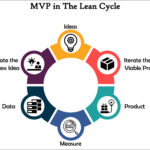How does DevOps speed up the software development process?
As software development process become more agile, DevOps is becoming more mainstream approach to delivering software. This ensures better collaboration between developers and operations personnel.
What is DevOps?
DevOps is one of the rapidly evolving software approaches for software delivery that supports the agile software development process. It improves the collaboration between developers and operation team.
According to research, the DevOps market is forecasted to reach $ 12.85 billion in 2025.
Building high-performance applications or software with speed and flexibility is a pressing challenge in today's digital world. It is critical for service providers to improve the performance of software applications and provide functionality to consumers.
Competitors with a digital first strategy need to rethink their current delivery processes, value chains, and processes while utilizing new technologies, tools, and processes to stay competitive. In order to deliver high-performance applications on time, DevOps is becoming increasingly important.
Evolution from Agile to DevOps
Iterative development has helped many organizations to deliver faster, better software; however, development and operations teams worked in a fragmented manner. The delay in software development can affect deadlines, create bottlenecks, and result in new features performing poorly and lack clarity on issues. Thus, DevOps aims to reduce barriers between software developers and operations teams, increasing agility and functionality.
Continuous Integration and Continuous Deployment
The DevOps lifecycle includes Continuous Integration and Continuous Deployment. With these two approaches, your code can be integrated and deployed without delay, enhancing software delivery frequency and quality. This reduces development time. It is easier to make changes to an application and they often reach production sooner. Prototype development is accelerated, and deployment is shortened.
- Continuous Integration
Continuous Integration (CI) involves frequently integrating code into a central repository so that developers can get feedback on changes as soon as they commit code and fix bugs as soon as they appear. Continual integration aims to improve software quality and reduce time to market.
- Continuous Delivery
Software development practices such as continuous delivery ensure code changes are made quickly, bugs are fixed quickly, and code is deployed into test or production environments after it has been developed.
- Continuous Deployment
Continuous deployment is one step ahead of continuous delivery. During production, changes to customer-facing code are directly communicated to the customer. An interrupted deployment process will only occur if a test fails. Automated deployments allow you to deploy written code in real-time.
Automation plays an important role in DevOps. The automation of software development and deployment processes requires a well-defined set of DevOps automation tools. To simplify CI / CD pipelines, many tools are available.
- DevOps Toolkit
Software development DevOps services can be used for a wide range of use cases, including modernizing applications, building cloud-based applications, integrating web applications, and developing mobile apps.
Benefits of DevOps
Here are some benefits of DevOps:- Fast software delivery: Developing high-quality software quickly and efficiently is made possible by DevOps.
- Better business outcomes: Business outcomes are improved through scalability and agility.
- Decreased manual effort: DevOps delivers automation that reduces manual effort, lowers failure rates, reduces labor costs, and speeds up incident recovery.
- Effective sprint cycles: Cross-functional collaboration, facilitated by automatic feedback and ongoing monitoring, keeps production and delivery cycles on track.
- Improved collaboration: A DevOps approach eliminates the division between operations and development. Transparency and efficiency are maintained in the development process.






1 Comment
Εγγραφή
April 17, 2023Thanks for sharing. I read many of your blog posts, cool, your blog is very good.